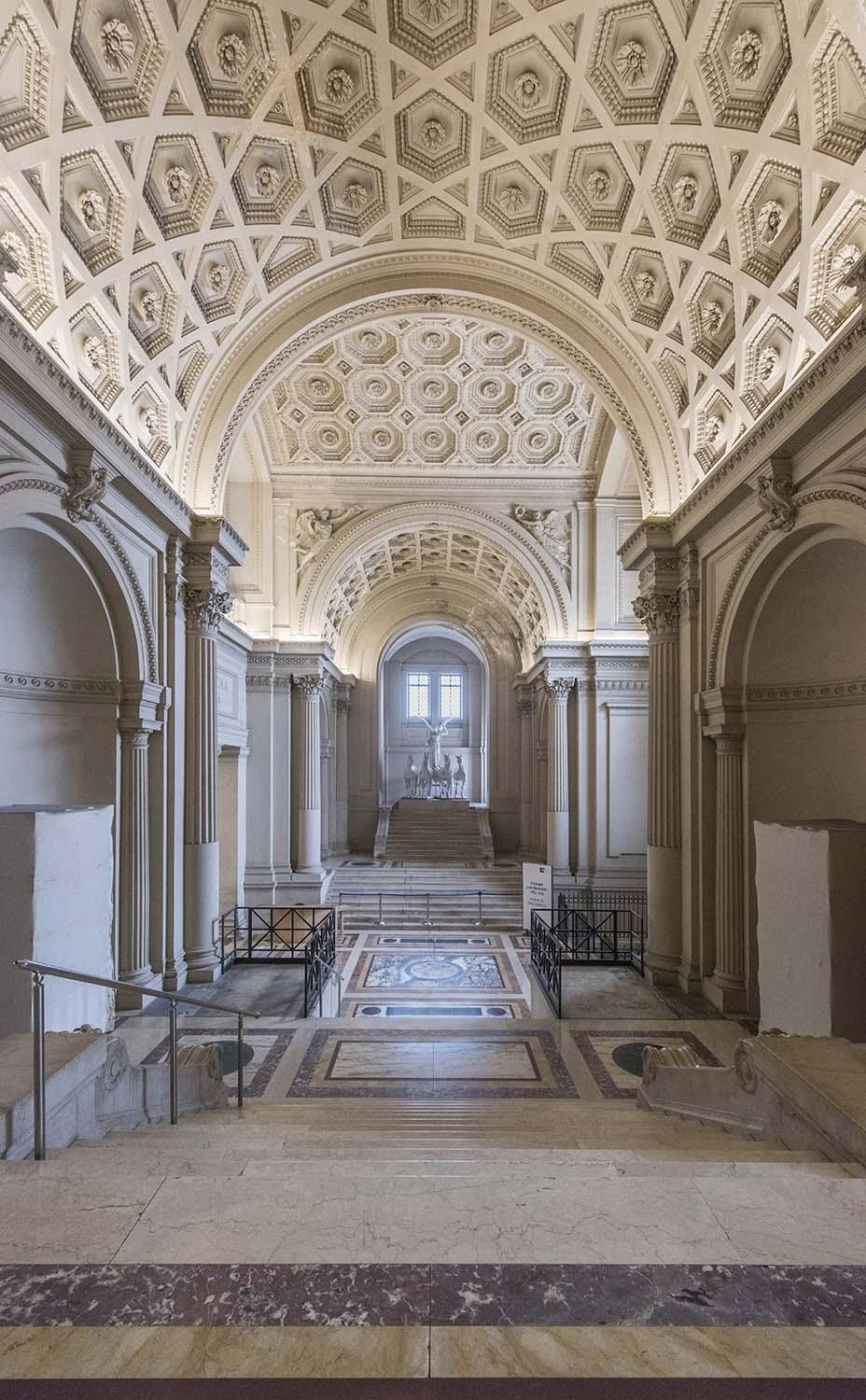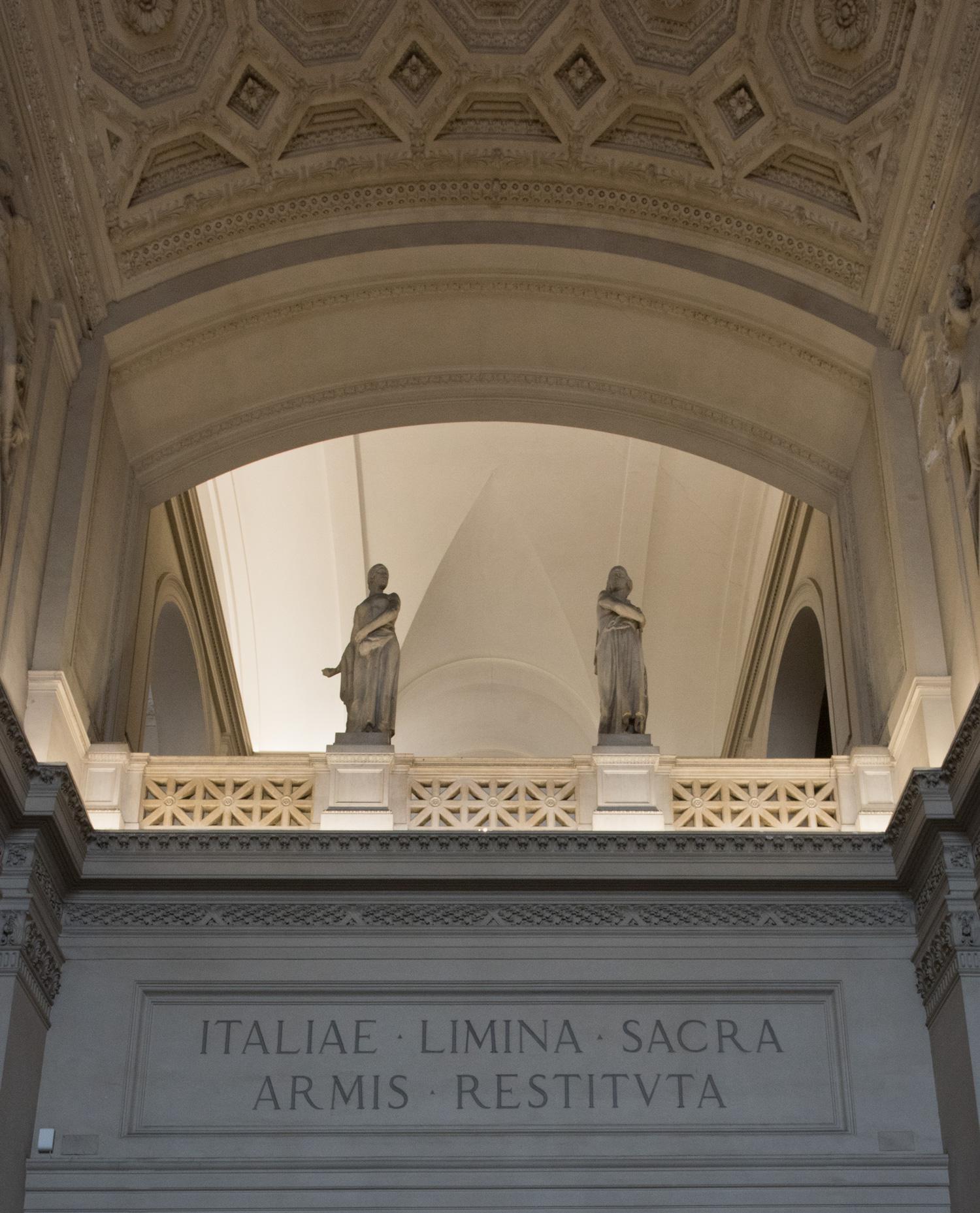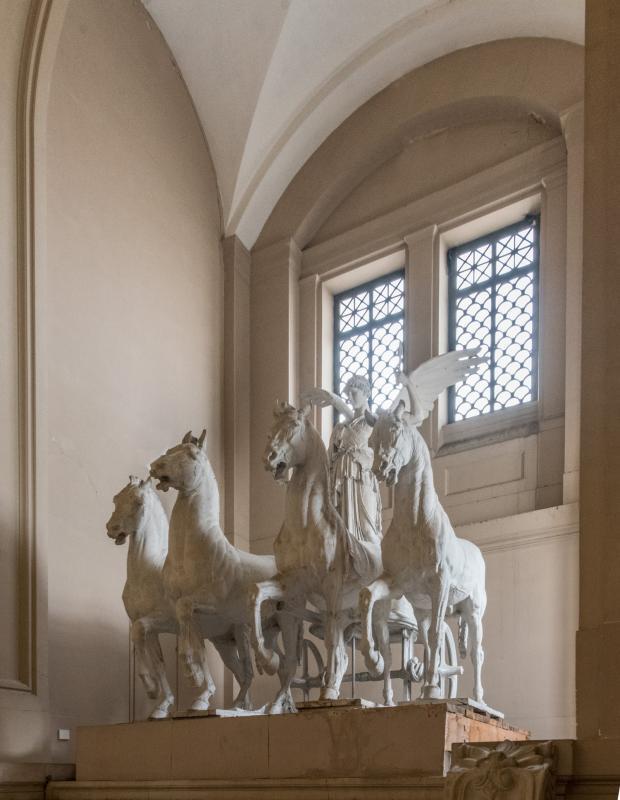The Atrium of Liberty
Classicism and Renaissance: the Atrium of Liberty, perhaps more so than any other area in the Vittoriano, is where visitors can truly understand the extent to which the Monument is indebted to the great Italian tradition
The atrium is dedicated to Liberty, a core value of Victor Emmanuel II’s politics and of the Risorgimento. This space reveals some of the linguistic origins of the Monument. The vast, majestic and balanced solemnity of the architectural space is indebted to both classical models, such as the Basilica of Maxentius, and to Renaissance ones, including the Basilica of Sant’Andrea in Mantua, one of the most important buildings by Leon Battista Alberti.
The architrave in front of the entrance houses the epigraph “ITALIAE LIMINA SACRA ARMIS RESTITUTA” i.e. “The sacred borders of Italy returned with arms”. Immediately above there are The Propaganda by Benedetto D’Amore from Palermo (1882-1960), the same who made the capitals of the Scala Nova in Palazzo Venezia and The Insurrection by Ercole Drei (1886-1973) from Faenza, both made between 1920 and 1921. Propaganda is a young woman with a bare torso, depicted while she is sowing seeds. Insurrection is a female figure dressed in a peplum with her right breast uncovered, in the act of brandishing a weapon.
This area contains the plaster sculptural group by the Roman sculptor, Paolo Bartolini, to be related to the Quadriga of Liberty, located above the western propylaeum of the Monument.













